Book celebrates landmark legacies of local women in design
Advertisement
Read this article for free:
or
Already have an account? Log in here »
To continue reading, please subscribe:
Monthly Digital Subscription
$0 for the first 4 weeks*
- Enjoy unlimited reading on winnipegfreepress.com
- Read the E-Edition, our digital replica newspaper
- Access News Break, our award-winning app
- Play interactive puzzles
*No charge for 4 weeks then price increases to the regular rate of $19.00 plus GST every four weeks. Offer available to new and qualified returning subscribers only. Cancel any time.
Monthly Digital Subscription
$4.75/week*
- Enjoy unlimited reading on winnipegfreepress.com
- Read the E-Edition, our digital replica newspaper
- Access News Break, our award-winning app
- Play interactive puzzles
*Billed as $19 plus GST every four weeks. Cancel any time.
To continue reading, please subscribe:
Add Free Press access to your Brandon Sun subscription for only an additional
$1 for the first 4 weeks*
*Your next subscription payment will increase by $1.00 and you will be charged $16.99 plus GST for four weeks. After four weeks, your payment will increase to $23.99 plus GST every four weeks.
Read unlimited articles for free today:
or
Already have an account? Log in here »
Hey there, time traveller!
This article was published 09/03/2024 (624 days ago), so information in it may no longer be current.
In 1938, a recent alum of the University of Manitoba walked into the offices of a Winnipeg architecture firm looking to put their degree to good use. The graduate had earned top marks, but the interviewer searched for fault elsewhere.
Despite having won the university’s gold medal at her convocation, Joan Harland was told she would make a fine secretary.
Harland had other plans.
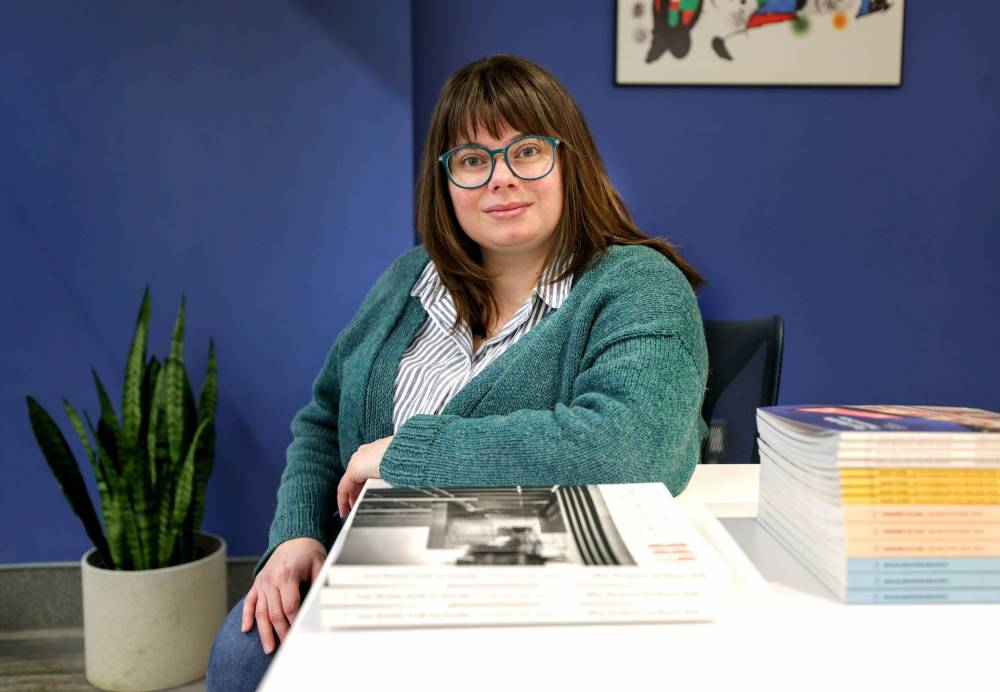
RUTH BONNEVILLE / FREE PRESS
Marieke Gruwel, the new executive director of the Winnipeg Architecture Foundation, has penned a book on the contributions of Manitoba women in architecture, interior design, planning, landscape architecture and engineering.
One year after finishing her studies, Harland became the university’s first instructor of interior decorating. By 1953, she was, somewhat ironically, named the chairman of the interior design department she helped build, and by 1958, Harland was promoted to full professor.
Harland’s career is one of dozens illuminated by Manitoba Women in Design, a new book by Marieke Gruwel documenting the contributions of women to the province’s built environment.
Meticulously researched over the course of a decade, the book is the latest publication from the Winnipeg Architecture Foundation, a non-profit organization for which Gruwel serves as executive director.
Gruwel’s intention for the book — which is split into five chapters: architecture, interior design, planning, landscape architecture and engineering — was not to create an all-encompassing history, but to open the door to further research and scholarship.
“I really wanted this book to be seen as part of the beginning,” says Gruwel, 31, who took over the foundation’s executive directorship from Susan Algie in the fall.
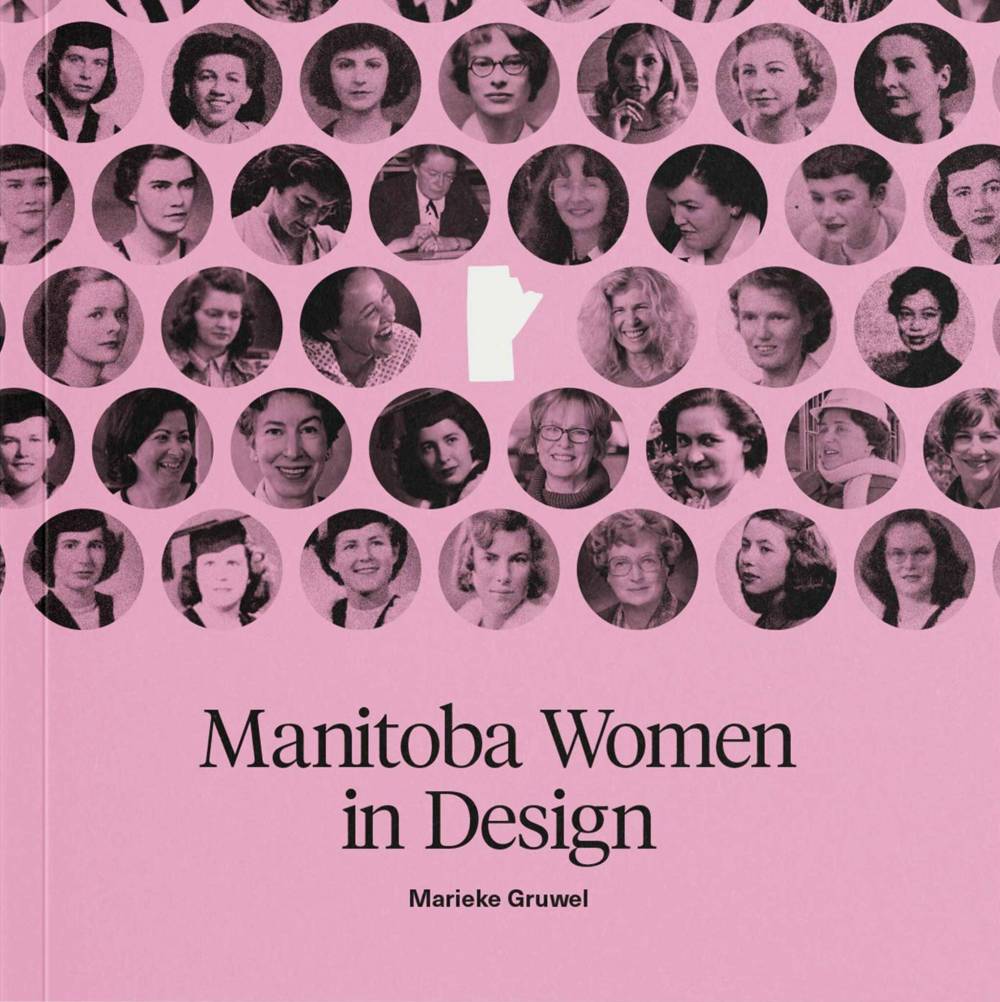
“This is not an exhaustive documentation. These are the women I found and wrote about. I don’t want anyone to see this and think there’s not more work to do.”
Gruwel’s fascination with this particular slice of Manitoban history began during her undergraduate studies in art history at the University of Winnipeg, during which she encountered two women who, along with Harland, served as a springboard for her eventual book. Both were named Elizabeth.
The first was Elizabeth Pilcher, an Australian architect and planner who was hired in 1958 by the firm Green Blankstein Russell and Associates (GBR). During her early years working at the foundation, Gruwel found a photograph of Pilcher being greeted at the airport by firm principal Cecil Blankstein upon her arrival in Winnipeg. Who was this woman? Gruwel wondered.
As it turned out, Pilcher was a subject more than befitting of Gruwel’s initial awe. During the Second World War, she was recruited by the U.S. government as a draftsman, working on top-secret drawings, including maps of possible invasion routes. After the war, she studied at Harvard University under the modernist architect Walter Gropius, founder of the Bauhaus.
By December 1958, Pilcher was on a tarmac in Winnipeg. A few months later, she was working with GBR on the since-demolished Winnipeg International Airport.
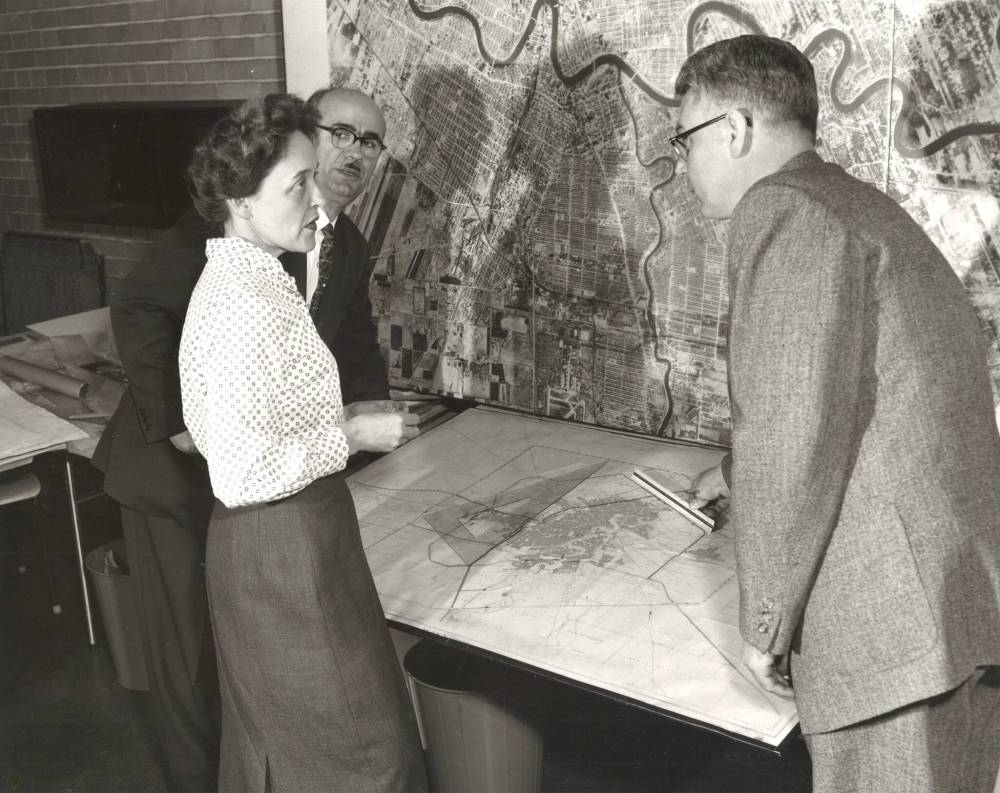
Green Blankstein Russell collection / Winnipeg Architecture Foundation
Elizabeth Pilcher working at the GBR offices, circa 1960.
The second Elizabeth to catch Gruwel’s eye was Elizabeth Lord, who in 1944 was the first woman to become a registered architect in Manitoba, running her own firm after working in drafting for both GBR and Moody and Moore, another prominent midcentury firm.
Interviewed by the Winnipeg Tribune in 1971, Lord was asked whether she’d had a successful career.
“Yes and no,” she answered. “Financially, no. But professional, yes. I set a landmark for women architects in Manitoba.”
Lord and Pilcher formed the spine of Gruwel’s master’s thesis, The Elizabeths: Gender, Modernism and Winnipeg’s Built Environment, 1945-1975, completed at Concordia University. After wrapping that up, Gruwel dug deeper, continuing to search for more stories of women serving foundational roles in local history.
The architecture foundation’s fonds, local newspaper archives, the U of M’s Brown and Gold yearbooks, and assistance from the University of Winnipeg’s oral history centre were significant sources for Gruwel of both material and subject matter. She also contacted dozens of family members and former colleagues, adding a journalistic element to the project.
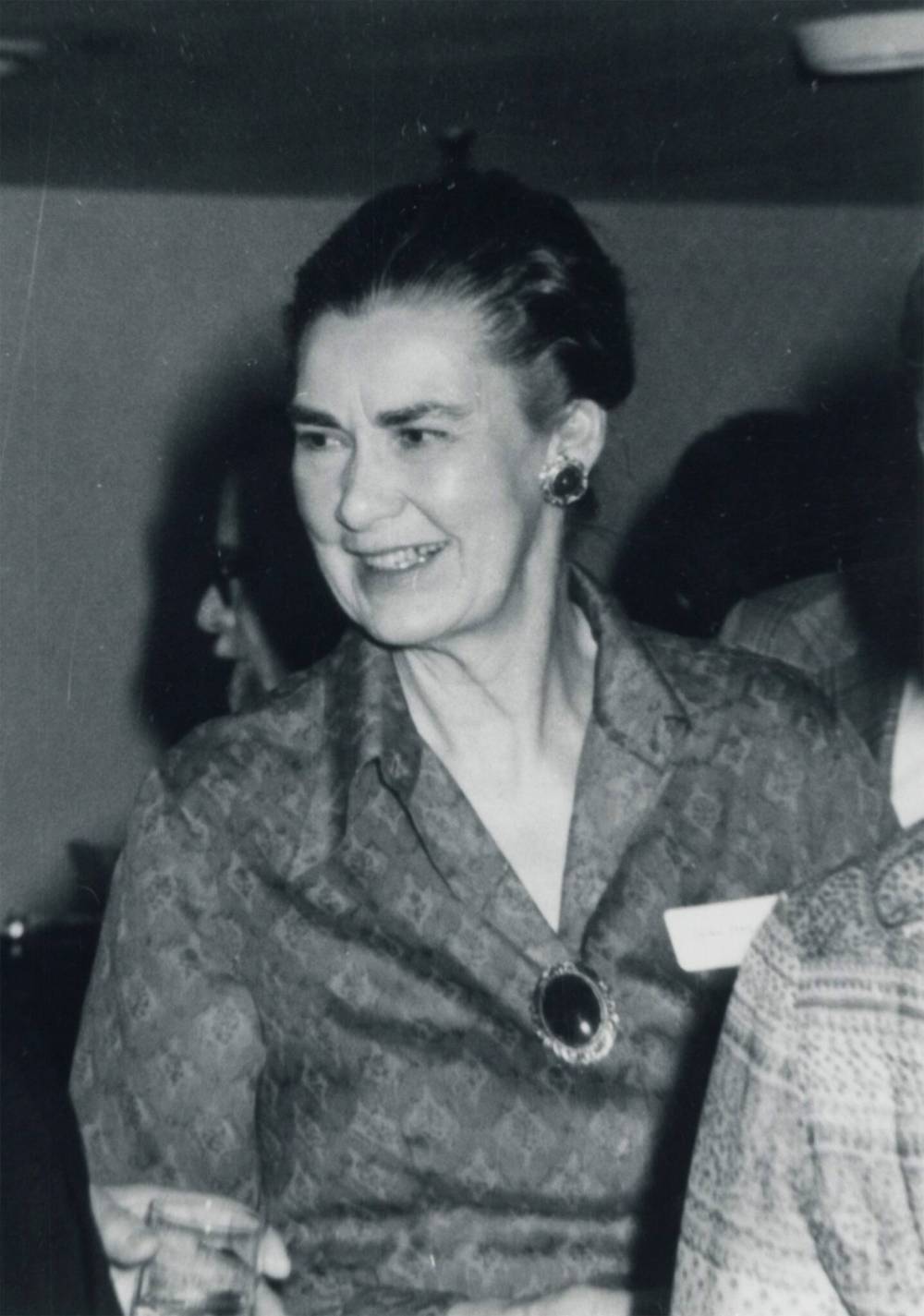
Joan Harland photo
The Professional Interior Designers Institute of Manitoba.
Those connections often led to the inclusion of original drafts and drawings; visuals which showcase the diverse range of skills employed by Gruwel’s subjects, who were rarely limited to a single discipline or field of design.
While Gruwel’s book serves as an entry point of understanding for significant projects including the old airport and city hall — whose interior was designed by Margaret Stinson — it also showcases the ways in which these women helped build the educational programs responsible for training practitioners in their fields, especially interior design, landscape architecture and city planning.
Another of Gruwel’s most engaging entries tells the story of Mary Rosalind Robertson, who in the 1960s was hired as Winnipeg’s chief city planner, the first woman to hold the title. Robertson, whose married name was Forbes, worked alongside Margaret Chivers on the 1966 Development Plan for Greater Winnipeg.
Other women discussed include landscape architects Cynthia Cohlmeyer, the first woman to graduate with a degree in that field in Canada and a leading hand in the redevelopment of The Forks; and Laurie Lamb Wagner, whose design work includes more than 100 playgrounds and the master plan for the redesign of the north end of Vimy Ridge Memorial Park.
While Gruwel did the writing, she says the book was made possible through the research assistance of many colleagues.
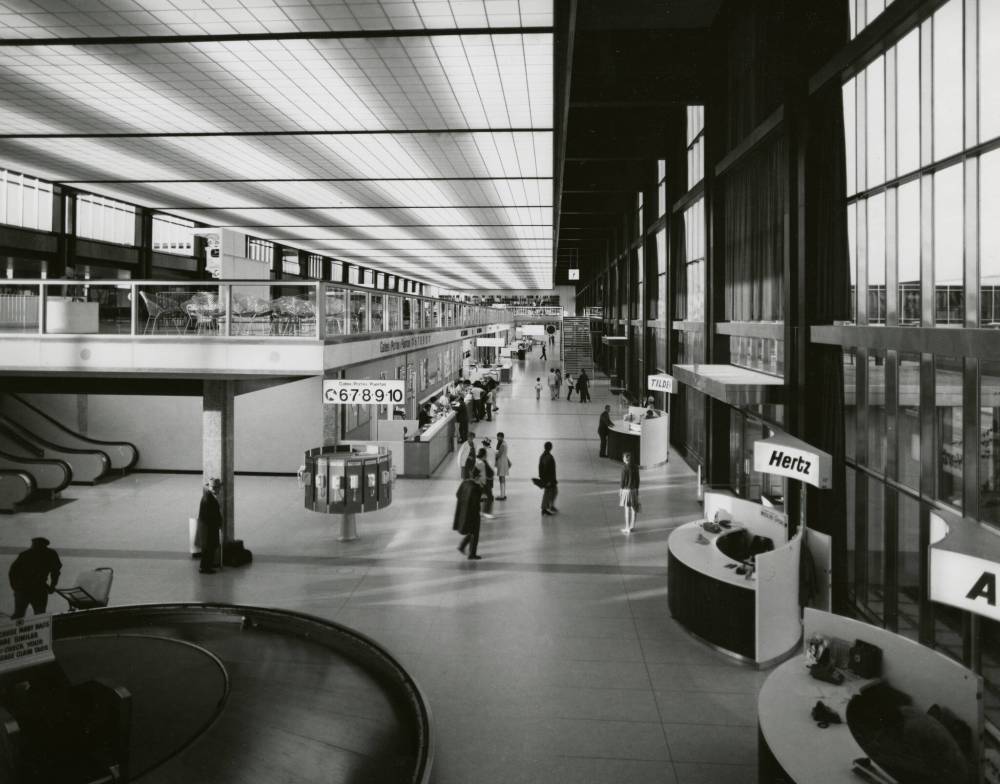
“I couldn’t have done it alone,” Gruwel says.
ben.waldman@winnipegfreepress.com

Ben Waldman is a National Newspaper Award-nominated reporter on the Arts & Life desk at the Free Press. Born and raised in Winnipeg, Ben completed three internships with the Free Press while earning his degree at Ryerson University’s (now Toronto Metropolitan University’s) School of Journalism before joining the newsroom full-time in 2019. Read more about Ben.
Every piece of reporting Ben produces is reviewed by an editing team before it is posted online or published in print — part of the Free Press‘s tradition, since 1872, of producing reliable independent journalism. Read more about Free Press’s history and mandate, and learn how our newsroom operates.
Our newsroom depends on a growing audience of readers to power our journalism. If you are not a paid reader, please consider becoming a subscriber.
Our newsroom depends on its audience of readers to power our journalism. Thank you for your support.
History
Updated on Tuesday, March 12, 2024 11:28 AM CDT: Corrects date Elizabeth Lord registered as an architect


